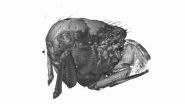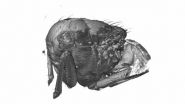(Press-News.org) The Joint British Societies' consensus recommendations for the prevention of cardiovascular disease (JBS3), which have been drawn up by *11 UK professional societies and charitable organisations, are based on the latest available scientific evidence.
They emphasise the importance of putting patients in the driving seat and starting preventive action early on, using a new method of risk assessment - the JBS3 risk calculator.
Heart disease deaths have almost halved over the past 40-50 years, particularly in high income countries, thanks largely to the identification of the common risk factors involved and national public health initiatives, say the authors.
But "despite impressive progress, there is much still to be achieved in the prevention and management of cardiovascular care, with no room for complacency," they point out.
CVD "is by far and away the leading cause of deaths worldwide," and is "rampant" in low and middle income countries, while the surge in obesity and diabetes threatens to overturn the steady decline made in CVD prevalence, they emphasise.
And rates of heart disease continue to vary substantially depending on where a person lives and how well off s/he is.
The new recommendations extend the current focus of preventive treatment from targeting only those at high short term (within the next 10 years) risk of a heart attack/stroke to those whose familial and lifestyle factors at a younger age indicate a low short term risk, but a high lifetime risk of developing CVD.
The approach is based on the growing body of evidence showing that there is a long build-up (pre-clinical phase) to CVD, and that most heart attacks and strokes occur in people who are in the 'intermediate' risk category.
Nevertheless, "most surveys suggest that the majority of the public underestimate their lifetime risk of developing and dying of CVD, considering cancer to be a greater threat despite robust evidence to the contrary," say the authors.
To try and stop CVD in its tracks and stave off the associated ill health and disability, the recommendations therefore include the JBS3 risk calculator, which aims to help healthcare professionals and patients better understand cumulative lifetime risk, and what can be done to lower it.
A key component of the calculator is a better understanding of the true age of the heart. This is worked out using current familial and lifestyle risk factors, and used to predict how many more years that individual can expect to live before s/he has a heart attack/stroke compared with someone without these particular factors - if no corrective action is taken.
So, for example, a 35 year old woman smoker, with a systolic blood pressure of 160 mm Hg and a total cholesterol of 7 mmol/l, plus a family history of premature CVD, would have a true heart age of 47 and expect to survive to the age of 71 without having a heart attack/stroke. Her 10 year risk would be less than 2%.
But if this woman quit smoking, cut her total cholesterol to 4 mmol/l and her systolic blood pressure to 130 mm Hg, her heart age would fall to 30. She could expect to live to the age of 85 before having a heart attack/stroke and more than halve her 10 year risk to less than 0.25%.
The JBS3 risk calculator will be a pivotal component of the NHS Health Check programme in England aimed at 40-74 year olds, but is not intended to prompt blanket prescribing of statins and other heart health drugs, say the authors.
"It is important to emphasise that, for the majority, the strong message will be the potential gains from an early and sustained change to a healthier lifestyle rather than prescription of drugs," they emphasise.
Lifestyle changes include quitting smoking, adopting a healthy diet, and boosting the amount of regular exercise while curbing sedentary activity.
"Acute cardiovascular care is expensive and with life expectancy continuing to rise, the prevalence of CVD continues to increase," write the authors. "The lifesaving gains made through national investment in acute cardiovascular care over more than a decade now need to be complemented by a modern and integrated approach to cardiovascular prevention," they conclude.
INFORMATION: END
Knowing true age of your heart key to curbing lifetime heart disease risk
Part of new risk assessment which aims to put patients in driving seat and start prevention early
2014-03-26
ELSE PRESS RELEASES FROM THIS DATE:
Doctors raise blood pressure in patients
2014-03-26
Doctors routinely record blood pressure levels that are significantly higher than levels recorded by nurses, the first thorough analysis of scientific data has revealed.
A systematic review led by the University of Exeter Medical School, and supported by the National Institute for Health Research Collaboration for Leadership in Applied Health Research and Care in the South West Peninsula (NIHR PenCLAHRC), has discovered that recordings taken by doctors are significantly higher (by 7/4mmHg) than when the same patients are tested by nurses.
Dr Christopher Clark, of the ...
Penicillin prescriptions risk under-dosing children, say experts at King's College London
2014-03-26
VIDEO:
Millions of children in the UK are potentially receiving penicillin prescriptions below the recommended dose for common infections, according to new research led jointly by researchers at King's College London,...
Click here for more information.
Millions of children in the UK are potentially receiving penicillin prescriptions below the recommended dose for common infections, according to new research led jointly by researchers at King's College London, St George's, ...
Million suns shed light on fossilized plant
2014-03-26
Scientists have used one of the brightest lights in the Universe to expose the biochemical structure of a 50 million-year-old fossil plant to stunning visual effect.
The team of palaeontologists, geochemists and physicists investigated the chemistry of exceptionally preserved fossil leaves from the Eocene-aged 'Green River Formation' of the western United States by bombarding the fossils with X-rays brighter than a million suns produced by synchrotron particle accelerators.
Researchers from Britain's University of Manchester and Diamond Light Source and the Stanford ...
Male Eurasian jays know that their female partners' desires can differ from their own
2014-03-26
Knowing what another person wants is not a trivial issue, particularly when the other's desires are different from our own. The ability to disengage from our own desire to cater to someone else's wishes is thought to be a unique feature of human cognition.
New research challenges this assumption. Despite wanting something different to eat, male Eurasian jays can disengage from their own current desire in order to feed the female what she wants even when her desires are different to his. The study, which was funded by the BBSRC, is published today in the Royal Society ...
Study is first to provide direct evidence that response of unborn children to glucose is associated with mother's insulin sensitivity
2014-03-26
A study published in Diabetologia (the journal of the European Association for the Study of Diabetes) is the first to provide direct evidence that fetal brain response to a dose of sugar given orally to its mother is associated with the mother's insulin sensitivity. This may indicate that the risk of subsequent obesity and diabetes may be pre-programmed in the womb. The study is by Dr Hubert Preissl and Dr Andreas Fritsche, University of Tübingen, Germany and German Center for Diabetes Research (DZD), Neuherberg, Germany, and colleagues.
Diabetes or obesity in the mother ...
Clean cooking fuel and improved kitchen ventilation linked to less lung disease
2014-03-25
Improving cooking fuels and kitchen ventilation is associated with better lung function and reduced chronic obstructive pulmonary disease (COPD), according to research published in this week's PLOS Medicine. The study, led by Pixin Ran from the Guanzhou Medical University, China, followed 996 villagers from southern China for 9 years to examine the effects of cleaner fuels and better kitchen ventilation on lung function and disease.
An estimated 3 billion people worldwide heat their homes and cook by burning biomass such as wood or animal dung. The resulting indoor air ...
X-rays film inside live flying insects -- in 3D
2014-03-25
VIDEO:
This video shows the insect thorax reconstructed from
tomograms and highlights the external movements of the thorax
and the location of the indirect power and steering muscles.
Click here for more information.
Scientists have used a particle accelerator to obtain high-speed 3D X-ray visualizations of the flight muscles of flies. The team from Oxford University, Imperial College, and the Paul Scherrer Institute (PSI) developed a groundbreaking new CT scanning technique ...
A way to end recurrent urinary tract infections? Study with mice gives hope
2014-03-25
(SALT LAKE CITY)—Millions of people worldwide – mostly women – suffer from recurrent urinary tract infections (UTIs) that seriously degrade their health and quality of life. Antibiotics treat individual infections, but preventing recurrent ones largely has been unattainable because of the way bacteria lodge in the inner layers of the bladder and quietly hide from drugs that can kill them.
In new studies with mice, however, researchers led by University of Utah microbiologists have shown that when chitosan, an FDA-approved compound for pharmaceutical, agricultural and ...
EEG study shows how brain infers structure, rules when learning
2014-03-25
PROVIDENCE, R.I. [Brown University] — In life, many tasks have a context that dictates the right actions, so when people learn to do something new, they'll often infer cues of context and rules. In a new study, Brown University brain scientists took advantage of that tendency to track the emergence of such rule structures in the frontal cortex — even when such structure was not necessary or even helpful to learn — and to predict from EEG readings how people would apply them to learn new tasks speedily.
Context and rule structures are everywhere. They allow an iPhone user ...
In-fly movie: 3D video from inside flying insects
2014-03-25
VIDEO:
This is a 3D movie of a blowfly's flight muscles moving created by Oxford University and Imperial scientists using a new X-ray scanning technique.
Click here for more information.
The flight muscles moving inside flies have been filmed for the first time using a new 3D X-ray scanning technique.
3D movies of the muscles were created by a team from Oxford University, Imperial College London, and the Paul Scherrer Institute (PSI), using the PSI's Swiss Light Source, ...
LAST 30 PRESS RELEASES:
The Ceramic Society of Japan’s Oxoate Ceramics Research Association launches new international book project
Heart-brain connection: international study reveals the role of the vagus nerve in keeping the heart young
Researchers identify Rb1 as a predictive biomarker for a new therapeutic strategy in some breast cancers
Survey reveals ethical gaps slowing AI adoption in pediatric surgery
Stimulant ADHD medications work differently than thought
AI overestimates how smart people are, according to HSE economists
HSE researchers create genome-wide map of quadruplexes
Scientists boost cell "powerhouses" to burn more calories
Automatic label checking: The missing step in making reliable medical AI
Low daily alcohol intake linked to 50% heightened mouth cancer risk in India
American Meteorological Society announces Rick Spinrad as 2026 President-Elect
Biomass-based carbon capture spotlighted in newly released global climate webinar recording
Illuminating invisible nano pollutants: advanced bioimaging tracks the full journey of emerging nanoscale contaminants in living systems
How does age affect recovery from spinal cord injury?
Novel AI tool offers prognosis for patients with head and neck cancer
Fathers’ microplastic exposure tied to their children’s metabolic problems
Research validates laboratory model for studying high-grade serous ovarian cancer
SIR 2026 delivers transformative breakthroughs in minimally invasive medicine to improve patient care
Stem Cell Reports most downloaded papers of 2025 highlight the breadth and impact of stem cell research
Oxford-led study estimates NHS spends around 3% of its primary and secondary care budget on the health impacts of heat and cold in England
A researcher’s long quest leads to a smart composite breakthrough
Urban wild bees act as “microbial sensors” of city health.
New study finds where you live affects recovery after a hip fracture
Forecasting the impact of fully automated vehicle adoption on US road traffic injuries
Alcohol-related hospitalizations from 2016 to 2022
Semaglutide and hospitalizations in patients with obesity and established cardiovascular disease
Researchers ‘listen in’ to embryo-mother interactions during implantation using a culture system replicating the womb lining
How changing your diet could help save the world
How to make AI truly scalable and reliable for real-time traffic assignment?
Beyond fragmented markets: A new framework for efficient and stable ride-pooling
[Press-News.org] Knowing true age of your heart key to curbing lifetime heart disease riskPart of new risk assessment which aims to put patients in driving seat and start prevention early


